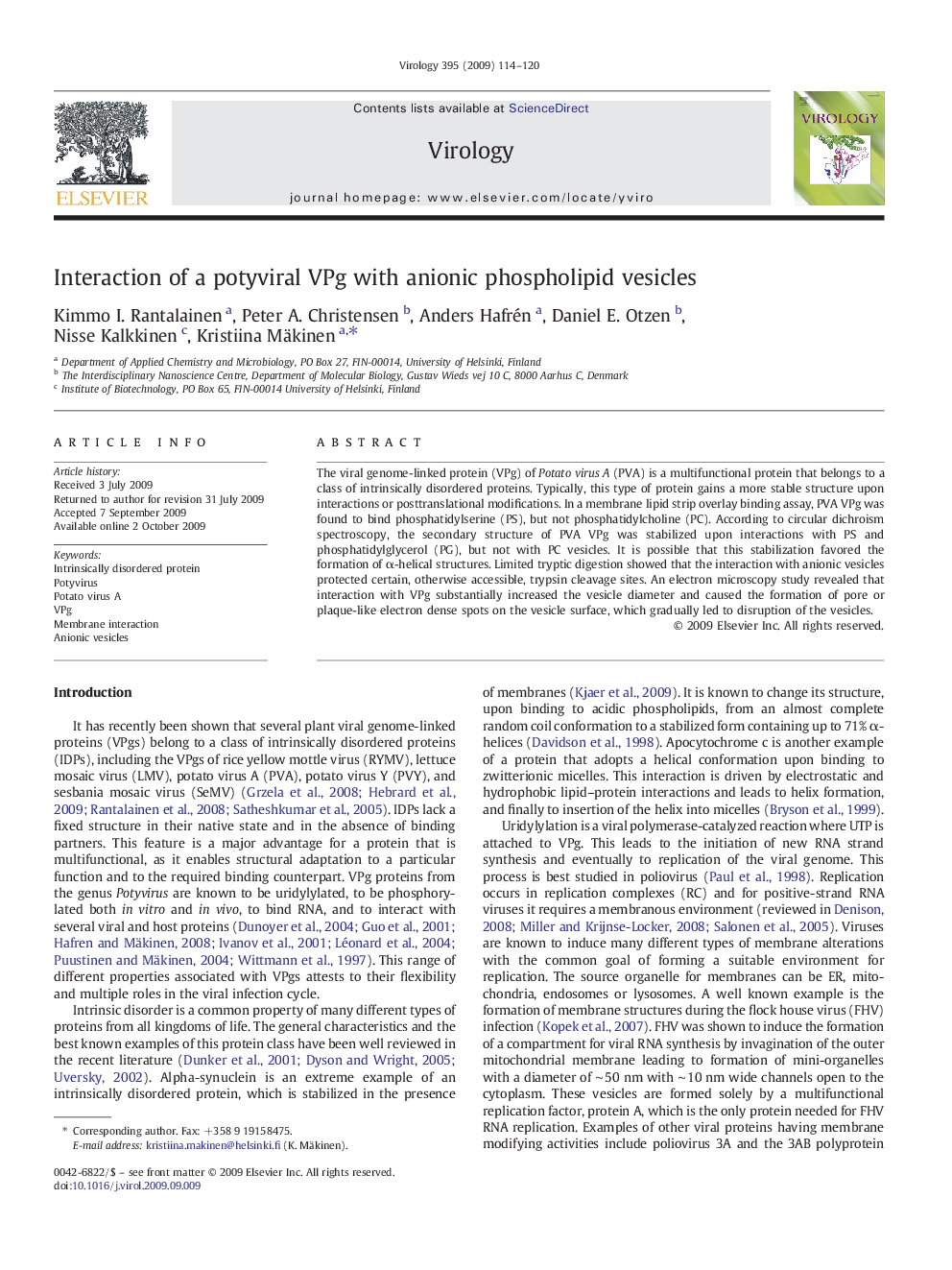| Article ID | Journal | Published Year | Pages | File Type |
|---|---|---|---|---|
| 3425346 | Virology | 2009 | 7 Pages |
The viral genome-linked protein (VPg) of Potato virus A (PVA) is a multifunctional protein that belongs to a class of intrinsically disordered proteins. Typically, this type of protein gains a more stable structure upon interactions or posttranslational modifications. In a membrane lipid strip overlay binding assay, PVA VPg was found to bind phosphatidylserine (PS), but not phosphatidylcholine (PC). According to circular dichroism spectroscopy, the secondary structure of PVA VPg was stabilized upon interactions with PS and phosphatidylglycerol (PG), but not with PC vesicles. It is possible that this stabilization favored the formation of α-helical structures. Limited tryptic digestion showed that the interaction with anionic vesicles protected certain, otherwise accessible, trypsin cleavage sites. An electron microscopy study revealed that interaction with VPg substantially increased the vesicle diameter and caused the formation of pore or plaque-like electron dense spots on the vesicle surface, which gradually led to disruption of the vesicles.
